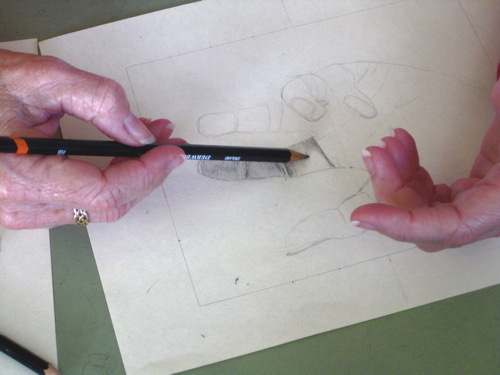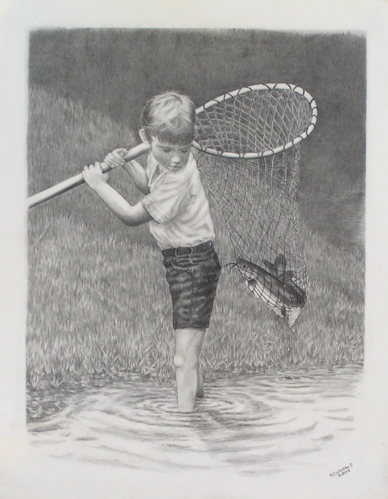In college, I had an art teacher in a design class or some other esoteric subject who said to me, “Just because you can draw doesn’t make you an artist”. I was devastated, insulted, dismayed, shocked, and any other adjective you can think of for the situation – how dare he say that to me!! Now that I have the advantage of 25+ years life experience and wisdom, I know he was right, even if it was an insensitive and snotty remark. Drawing is a skill that can be taught, learned, developed and is sometimes just innate. Art has to be something that one learns about, develops over time, and comes about because of a love for the subject. Art can encompass many skills, forms and be useful in many careers. Drawing is a skill that is useful regardless of one’s career, and it definitely is useful in any art career. One can become an artist without the ability to draw, particularly in this age of multiple tools. Tonight at The Downtown Gallery I had an interesting conversation with my friend Lisa, the art teacher and MFA student. (That means Master’s of Fine Art, which is the highest degree possible in art). She is teaching her junior high students more than any of my college professors ever taught me – she goes into principles, elements, styles and history. My college professors may have had their MFAs but mostly they walked around the room while taking a break from their own work, and offered criticism and snide remarks (“Just because you can draw. . .” or “You need to work on composition”) without ever bothering to actually teach, to demonstrate or share information! I have been teaching people how to draw for almost 15 years. (and that is without an MFA – imagine that!) It is a skill, and in teaching the skill, many other things about art can be shared. We talk about different styles, ways to set up a drawing from the beginning, ways of arranging the elements in a drawing, and lots of technique. (The main thing I ever want to learn is HOW and the second is WHY, so that is what I share with my students.) Through the years, only two of my students that I can think of have pursued art as a career. Two!! Everyone that has stayed long enough to learn to draw has learned to draw, and they each have drawings they can proudly show off to prove that they know how to draw.

Tonight I saw 3 former drawing students. Louis is in the Navy, Stephanie is thinking about occupational therapy, and Mark is just thinking. Maybe. Maybe he is just enjoying being 19 and trying out this and that. Drawing lessons were not a waste of time for any one of these wonderful young folks – they learned to draw (duh), learned to communicate with people of all ages (that is the way my classes are), explored a type of art in a comfortable environment, got to display their work in a show or two, developed a bit more confidence, and made new friends. I enjoyed every moment spent with each of these people and love seeing how they are turning into adults. We have an easy friendship that transcends age and that has lasted through time and changes. (And I can draw AND am an artist, so there, you Snotty Professor who are now probably just a retired teacher! But I’m not bitter. )











